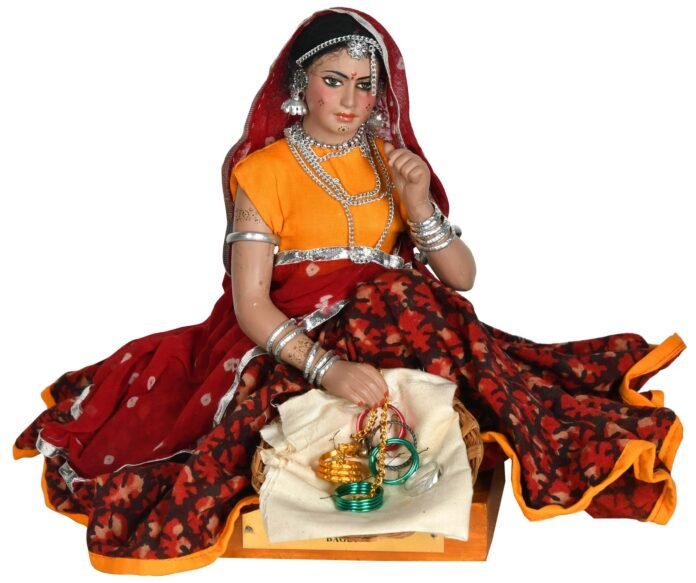
Rajasthan, India’s largest state by area, is renowned for its vibrant culture, majestic forts, and colorful traditions. Amidst its diverse cultural landscape lies the unique and fascinating Bagadi culture, predominantly found in the Shekhawati region. The Bagadi community, with its rich heritage and distinctive customs, offers a glimpse into the heart of rural Rajasthan.
Historical Roots and Origin
The Bagadi culture is primarily associated with the Shekhawati region, encompassing districts like Sikar, Jhunjhunu, and Churu. This area has a rich history, often referred to as an open-air art gallery due to its magnificent havelis adorned with intricate frescoes and murals. The Bagadis are traditionally agriculturalists, but their culture extends beyond farming to encompass a rich tapestry of art, music, and folklore.
Language and Literature
The Bagadi dialect, a variant of Rajasthani, is the primary mode of communication within the community. This dialect has a poetic quality, often reflected in their folk songs and stories. Bagadi literature is rich with tales of valor, love, and devotion, passed down through generations. The oral tradition remains strong, with elders recounting epic sagas and moral stories to the younger generation.
Art and Architecture
Shekhawati, the heartland of Bagadi culture, is famed for its havelis (traditional mansions), which are masterpieces of art and architecture. These havelis, built by wealthy merchants, are adorned with frescoes depicting mythological scenes, historical events, and everyday life. The vibrant colors and intricate designs showcase the artistic prowess of the Bagadi people.
Craftsmanship is another hallmark of Bagadi culture. The region is known for its textiles, especially the Bandhani (tie-dye) and Leheriya (wave pattern) prints, which are popular across India. Traditional Bagadi jewelry, often crafted in silver, is elaborate and showcases the community’s love for ornate designs.
Music and Dance
Music and dance are integral to Bagadi culture. The community’s folk music is a soulful blend of traditional instruments like the dholak, nagara, and sarangi, with lyrics that reflect their everyday experiences and spiritual beliefs. Songs often celebrate various life events, from births and weddings to harvests and festivals.
Dance forms such as the Ghoomar and Kalbeliya are popular among the Bagadis. These dances are characterized by graceful movements, vibrant costumes, and rhythmic music, and are performed during festivals and celebrations. The dancers’ intricate footwork and swirling skirts create a mesmerizing visual spectacle.
Festivals and Rituals
The Bagadi community celebrates a variety of festivals with great enthusiasm and fervor. Teej, Gangaur, and Holi are some of the major festivals, marked by elaborate rituals, processions, and communal feasts. During these times, the streets come alive with music, dance, and the vibrant colors of traditional attire.
Religious rituals also play a significant role in Bagadi culture. The community worships a pantheon of deities, with special reverence for local gods and goddesses. Temples and shrines are central to village life, serving as places of worship and social gathering.
Traditional Attire
Traditional Bagadi attire is both practical and ornate, reflecting the region’s climatic conditions and cultural aesthetics. Men typically wear dhotis and turbans, while women don ghagras (long skirts) and odhnis (veils). The use of bright colors and intricate embroidery is a hallmark of Bagadi clothing, making their attire a feast for the eyes.
Culinary Delights
Bagadi cuisine is a delightful blend of flavors, characterized by its use of locally sourced ingredients and aromatic spices. Staples like bajra (pearl millet), wheat, and lentils form the base of most meals. Popular dishes include bajre ki roti (millet bread), dal baati churma (lentil curry with baked wheat balls), and gatte ki sabzi (gram flour dumplings in spicy gravy). Sweets like ghewar and feeni are enjoyed during festivals and special occasions.
Summing Up
The Bagadi culture of Rajasthan is a vibrant mosaic of traditions, arts, and customs that reflect the resilience and creativity of its people. Rooted in the heart of Shekhawati, this culture is a testament to the region’s rich history and enduring spirit. From their colorful havelis and folk arts to their festivals and culinary delights, the Bagadis offer a captivating glimpse into the soul of rural Rajasthan. As we explore and celebrate this unique culture, we not only honor their heritage but also ensure that these traditions continue to inspire and enchant future generations.

